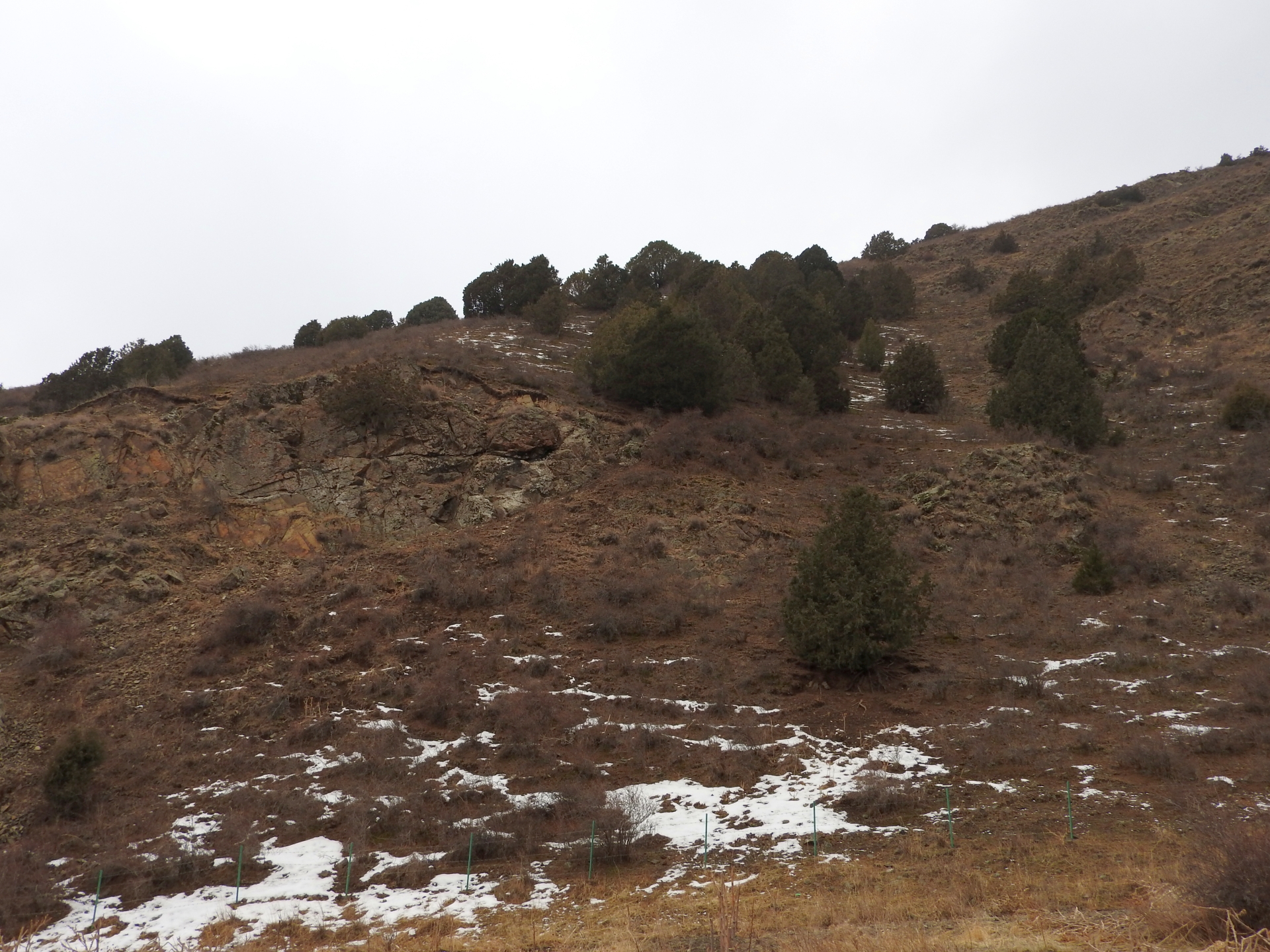Efficient irrigation technology
Outlet of reservoir for drip irrigation with valve for fertilizer application
GIZ
Drip irrigation of fruit tree in household plot
GIZ
Newly planted apple garden in Sayhun town, based on drip irrigation
GIZ
Sprinkler irrigation of potato field
GIZ
Conventional irrigation in the area of the solution had been furrow irrigation only. This technology requires large amounts of irrigation water. In cases of shortage of irrigation water, in particular in drought situations, which due to climate change are increasingly frequent, furrow irrigation is not possible - the water just cannot reach all parts of the field and be taken up by the plants.
In the case of potatos increasing heat causes stress to plants.
As more efficient and climate change adapted irrigation technologies of drip irrigation have been introduced. Drip irrigation allows for a locally targeted provision of irrigation water to individual plants. Additionally it can be used to apply fertilizer in correct dosage and extremely efficiently.
The sprinkler irrigation is highly suitable for potatoes and can help to reduce heat stress in cases where sufficient water of suitable quality is available.
The readiness of farmers to try new irrigation technologies was much driven by the increasing awareness about the limitations of the conventional furrow irrigation, experience of water shortages and the policy of the national and regional governments to apply water efficient irrigation technologies, e.g. in the newly irrigated lands of Sayhun town, which are fully dependent on the costly pump irrigation with water from Syrdarya river. The need was met by the availability of engineering and agricultural knowledge and funding provided by GIZ.
Drip and sprinkler irrigation have been successfully tested in various crops, but the economic viability of these efficient irrigation technologies varies. Drip irrigation is only economically viable where limited irrigation equipment can allow for production of high yield of expensively sold crops, e.g. fruits and melons. For mass crops, like onion and potato, the investment required is too high compared to the prices achieved for the harvest. However, if irrigation water becomes more scarce, irrigation equipment becomes more affordable and/or prices of agricultural products increase, this situation may change and drip irrigation may become affordable for such crops as well.
Sprinkler irrigation already nowadays can be efficient where increasing temperatures challenge the productivity and quality of potato crop.
